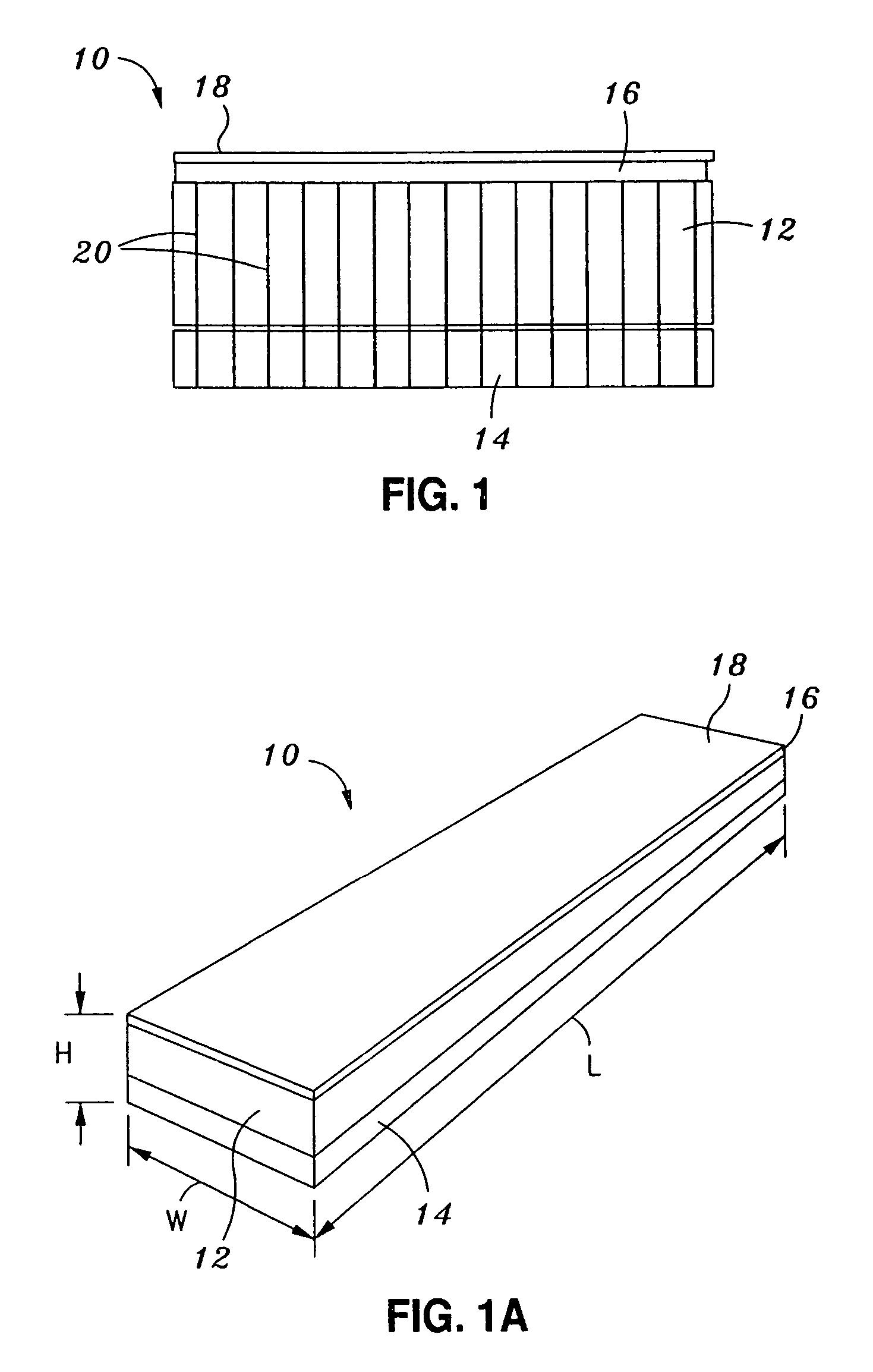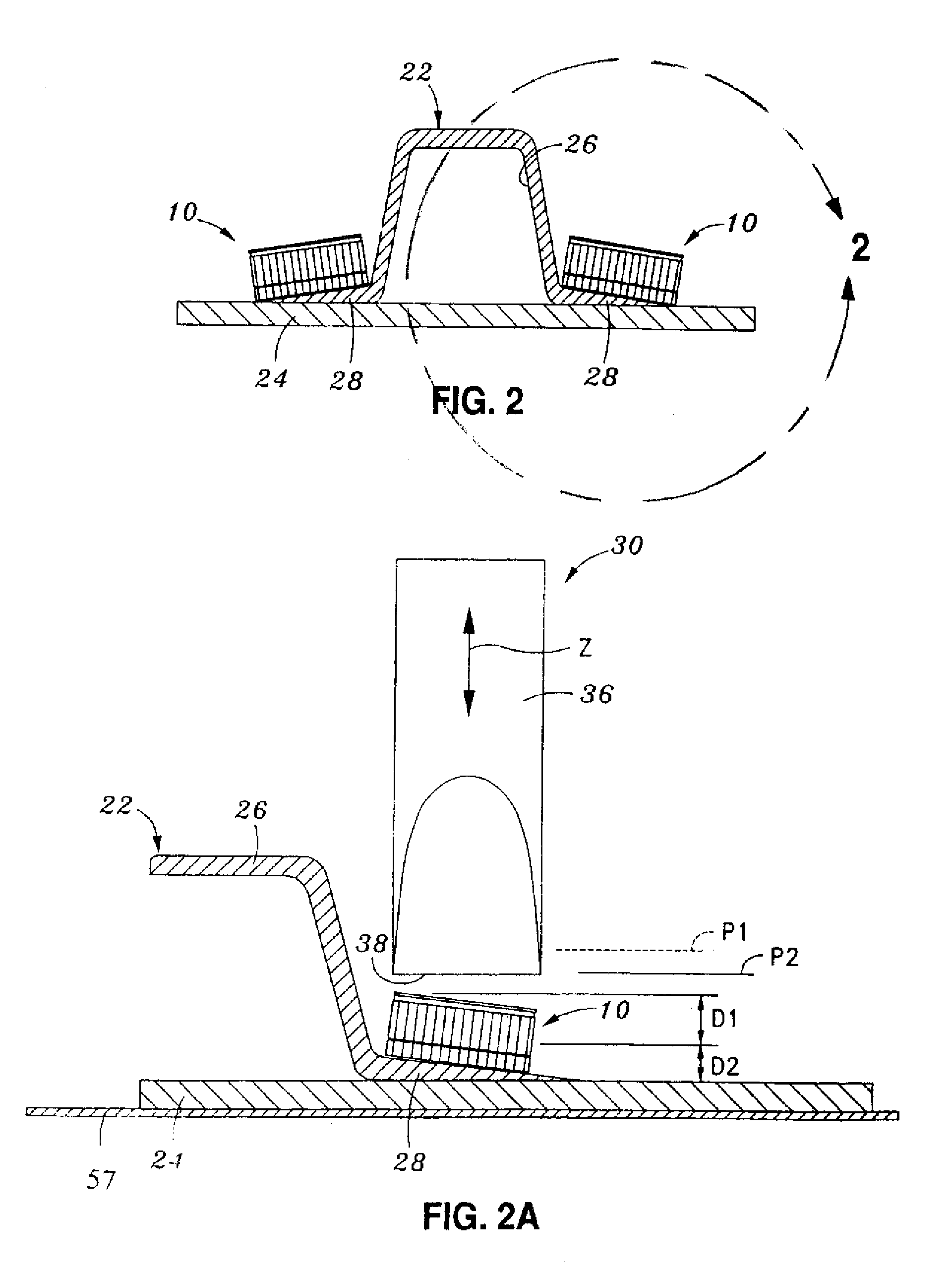Technique for predicting over insertions for partial grids and defective Z-pins
a partial grid and z-pin technology, applied in the field of reinforced composites, can solve the problems of excessive force being applied to the pins, failure mode typically occurring at the inner hat stiffener to the skin surface, and failure to automate the z-pin process
- Summary
- Abstract
- Description
- Claims
- Application Information
AI Technical Summary
Benefits of technology
Problems solved by technology
Method used
Image
Examples
Embodiment Construction
[0032]Referring now to the drawings wherein the showings are for purposes of illustrating preferred embodiments of the present invention only, and not for purposes of limiting the same, FIGS. 1 and 1A provide cross-sectional and top perspective views, respectively, of an exemplary Z-pin carrier pre-form 10 which may be used in the Z-pinning process of the present invention as will be described in more detail below. The carrier pre-form 10 comprises an upper layer 12 of low density foam and a lower layer 14 of high density foam which is contiguous with the upper layer 12. In this regard, the top surface of the lower layer 14 is abutted against the bottom surface of the upper layer 12. Covering the top surface of the upper layer 12 is a layer 16 of polyolefin. The layer 16 is in turn covered by a layer 18 which is fabricated from paper. As such, the layer 16 is disposed between the layer 18 and the upper layer 12.
[0033]In addition to the layers 12, 14, 16, 18, the carrier pre-form 10 ...
PUM
| Property | Measurement | Unit |
|---|---|---|
| time | aaaaa | aaaaa |
| insertion speed | aaaaa | aaaaa |
| insertion speed | aaaaa | aaaaa |
Abstract
Description
Claims
Application Information
 Login to View More
Login to View More - R&D
- Intellectual Property
- Life Sciences
- Materials
- Tech Scout
- Unparalleled Data Quality
- Higher Quality Content
- 60% Fewer Hallucinations
Browse by: Latest US Patents, China's latest patents, Technical Efficacy Thesaurus, Application Domain, Technology Topic, Popular Technical Reports.
© 2025 PatSnap. All rights reserved.Legal|Privacy policy|Modern Slavery Act Transparency Statement|Sitemap|About US| Contact US: help@patsnap.com



